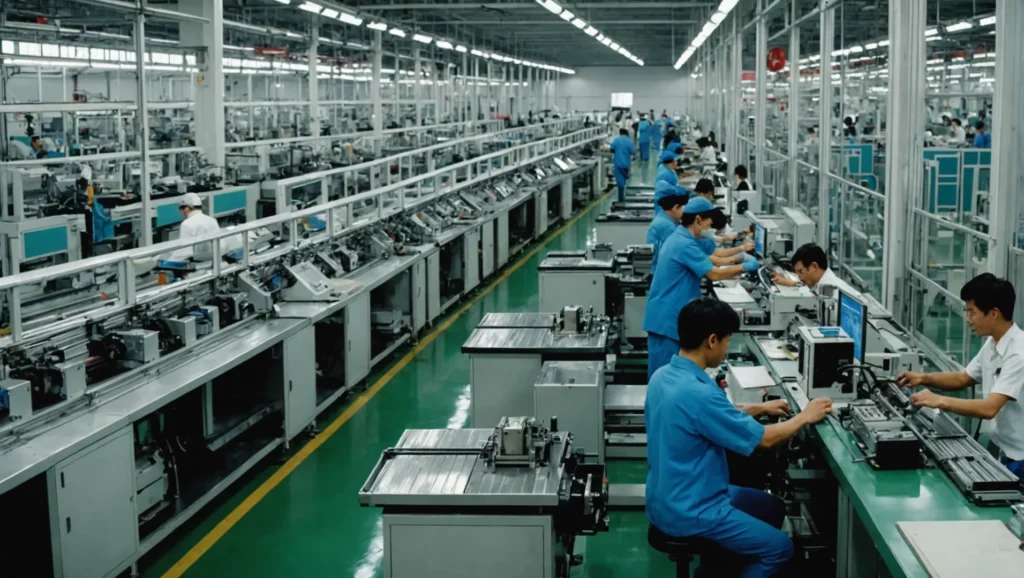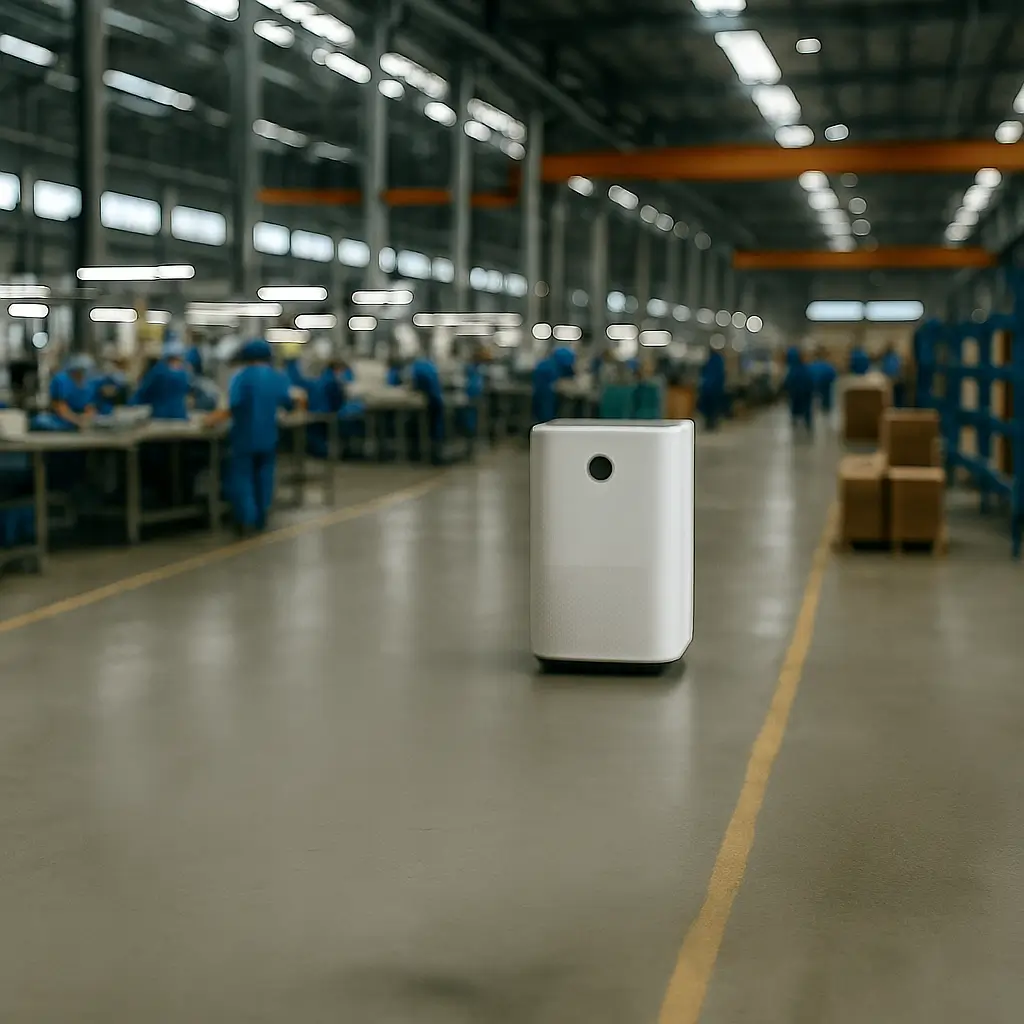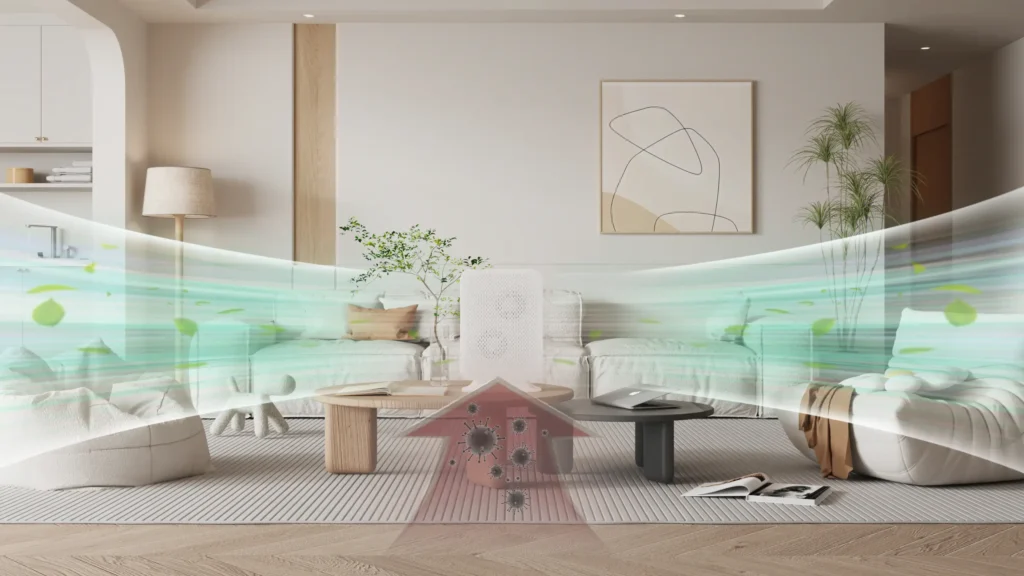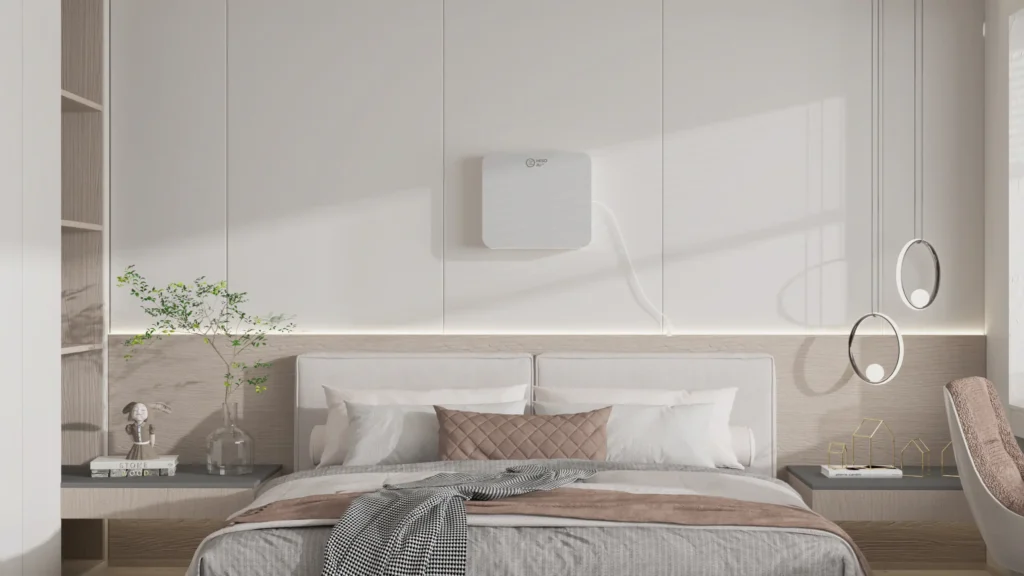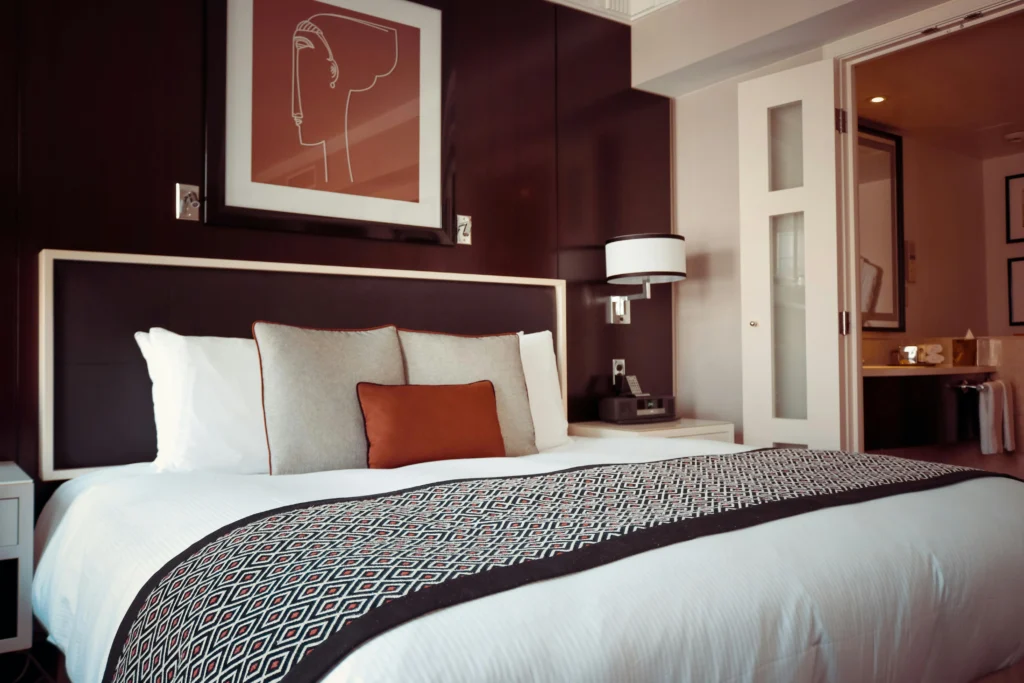ما الذي يجعل جهاز تعقيم الهواء الناعم مناسبًا لقتل الأمراض المنقولة بالهواء؟ سيخبرك هذا الدليل بالطراز والحجم والسعر الذي يجب أن تضعه في اعتبارك.

جدول المحتويات:
- ما هي آلة تعقيم الهواء؟
- معقم الهواء المحمول مقابل معقم الهواء المنزلي الكامل
- الفرق بين جهاز تنقية الهواء التجاري وجهاز تعقيم الهواء
- كيف يعمل معقم الهواء؟
- أشياء يجب معرفتها قبل شراء جهاز تعقيم الهواء
- أسئلة وأجوبة حول آلة تعقيم الهواء
- من أين تشتري آلة تعقيم الهواء؟
ما هي آلة تعقيم الهواء؟
أجهزة تعقيم الهواء بالأشعة فوق البنفسجية التجارية تعمل الفلاتر على تنقية الهواء وتعقيمه ليصبح قابلاً للتنفس بأمان. تُعد عملية التعقيم إضافة كبيرة حيث أن معظم أجهزة تنقية الهواء التجارية لا تتمتع بهذه الميزة. وبالتالي، غالبًا ما تستخدم أجهزة التعقيم بالهواء تجاريًا في المناطق التي يزورها الناس بشكل متكرر مثل مرافق الرعاية الصحية والمطاعم.
معقم الأشعة فوق البنفسجية لأنظمة التدفئة والتهوية وتكييف الهواء مع فلاتر HEPA المكملة في قتل البكتيريا والفيروسات والجراثيم والعفن حتى 0.3 ميكرون بكفاءة 99.97%. بالإضافة إلى ذلك، الوحدات المزودة بـ آلات تصفية الهواء الكربوني المنشط إزالة الروائح الكريهة والفورمالديهايد والدخان والمواد العضوية.
معقم الهواء المحمول مقابل معقم الهواء المنزلي الكامل
هناك نوعان من التصميمات لأجهزة تعقيم الهواء: نظام تعقيم الهواء المحمول ونظام تعقيم الهواء المنزلي بالكامل. من المهم التمييز بينهما حتى تتمكن من اختيار التصميم الأفضل لمنزلك أو منشأتك.
معقمات الهواء المحمولة

أجهزة التعقيم الهوائية المحمولة هي تلك التي يمكن نقلها ووضعها في غرفة دون الحاجة إلى تركيب البراغي والمسامير. إنها مريحة للغاية وبأسعار معقولة.
معقم هواء منزلي كامل في نظام التدفئة والتهوية وتكييف الهواء (HVAC)
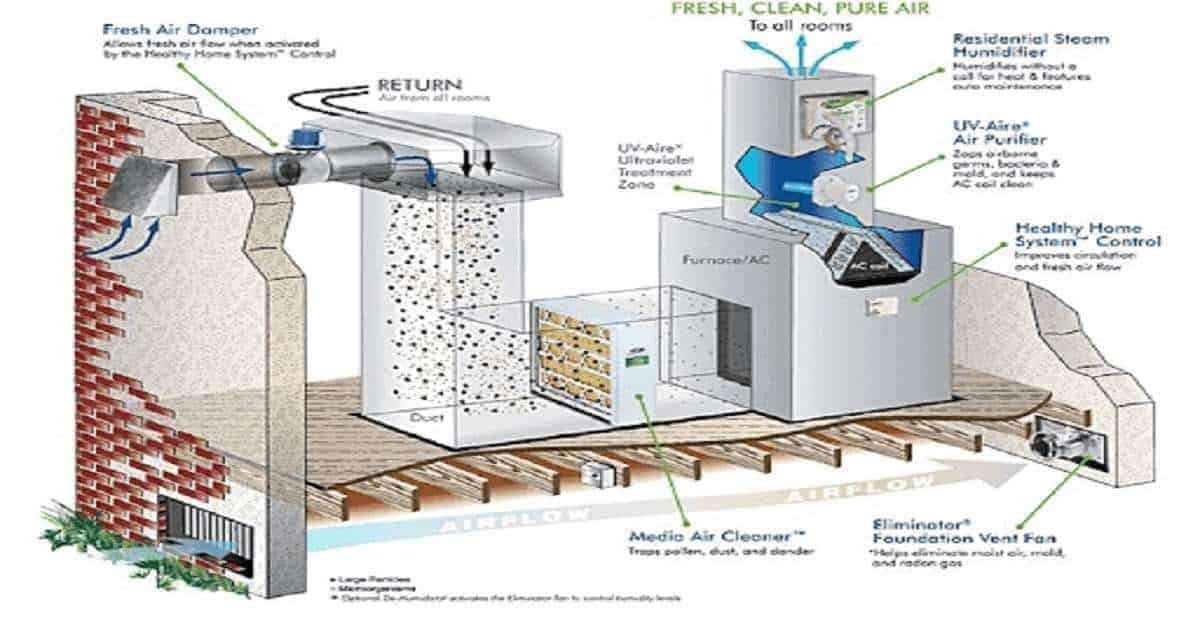
يتم توصيل أنظمة تعقيم الهواء في المنزل بأكمله بأنظمة التدفئة والتهوية وتكييف الهواء لتصفية الهواء بسهولة قبل إعادة تدوير الهواء النظيف. وهي تتطلب تركيباً احترافياً وعادةً ما تكون أغلى ثمناً. ولكن إذا كنت تفضل أن تحصل منشأتك بأكملها على هواء نقي دون شراء وحدات فردية لكل غرفة، فإن نظام مجاري الهواء المعقم بالأشعة فوق البنفسجية يمكن أن يكون خياراً قابلاً للتطبيق.
الفرق بين جهاز تنقية الهواء التجاري وجهاز تعقيم الهواء
- تعمل أجهزة تعقيم الهواء على تعقيم الهواء عن طريق تعطيل الكائنات الحية الدقيقة الضارة من خلال الأشعة فوق البنفسجية
- يمكن لطراز جهاز التعقيم بالأشعة فوق البنفسجية HVAC أن يكمّل نظام التهوية الخاص بك لقتل البكتيريا من الهواء قبل تعميمه في الغرفة.
- معقمات الهواء غالباً ما تكلف أكثر من أجهزة تنقية الهواء التجارية
كيف يعمل معقم الهواء؟
باستخدام مجموعة متنوعة من الفلاتر عالية الأداء، تعمل آلة تعقيم الهواء عن طريق تمرير الهواء الملوث وتنقيته وتوصيله نقيًا وصالحًا للتنفس. هناك طريقتان لكيفية عملها اعتماداً على نوع الجهاز الذي تختاره:
- توليد الأوزون + جهاز تعقيم بالأشعة فوق البنفسجية
- الترشيح الميكانيكي + جهاز التعقيم بالأشعة فوق البنفسجية
معقم هواء الأوزون
يستخدم هذا الجهاز فلاتر متعددة المراحل وعالية الأداء مثل التعقيم بالبلازما لتصفية البكتيريا، بالإضافة إلى إطلاق أيونات سالبة لتنظيف الهواء.
جهاز تعقيم الهواء بالفلتر الميكانيكي
يستخدم هذا الجهاز فلاتر H13 HEPA والعديد من الفلاتر الأخرى مثل فلتر النايلون المسبق وفلتر الكربون المنشط، وما إلى ذلك، ويعقّم الهواء عن طريق قتل الفيروسات من خلال مصابيح UVC.
فلاتر تعقيم الهواء

الآن بعد أن تعرفت على أنواع أجهزة تعقيم الهواء وكيفية عملها، دعنا نرى كيف يؤثر كل نوع من الفلاتر التي تستخدمها على عملية تنظيف الهواء.
تحتوي أجهزة تعقيم الهواء على أنواع فلاتر عالية الجودة أكثر من أجهزة تنقية الهواء العادية. على سبيل المثال، يتكوّن جهاز تعقيم الهواء HA40 من الفلاتر التالية لالتقاط 99.9% (بدلاً من 99.97% فقط) من حبوب اللقاح والغبار والفيروسات والضباب والروائح الكريهة.
فلتر مسبق من النايلون الشبكي
النايلون هو مادة قوية محبة للماء (محبة للماء) ومقاومة للمذيبات تستخدم كمرشح مسبق لالتقاط الملوثات الكبيرة. وعادةً ما تكون هذه الطبقة مصنوعة من مادة قابلة للغسل ومتينة لالتقاط الملوثات الكبيرة مسبقًا والتي قد تؤذي مرشح HEPA الثانوي.
يلتقط ذلك وبر الحيوانات والغبار وحبوب اللقاح وغيرها الكثير.
فلتر H13 HEPA من الدرجة الطبية H13
الطبقة التالية من الفلتر هي فلتر H13 HEPA، وهو نوع خاص من HEPA يُستخدم في البيئات الطبية لقوته. في حين أن مرشحات HEPA القياسية المستخدمة في أجهزة تنقية الهواء يمكن أن تحبس 0,3 ميكرون من المواد المسببة للحساسية بكفاءة 95%، بينما تحبس H13 ما يصل إلى 0,21 ميكرون بكفاءة 99.97%. وهذا يعني أن بإمكانه فعلياً احتجاز كل الملوثات في الهواء.
فلتر الكربون المنشط
إن الكربون المنشط هو فلتر عالي الامتصاص وفعال في التقاط الروائح والدخان والضباب الدخاني والمركبات العضوية المتطايرة (VOCs). وهذا يعني أنه كلما كان جهاز تعقيم الهواء يحتوي على هذا الفلتر، يمكنك التأكد من قدرته على التقاط الروائح غير المرغوب فيها والدخان السلبي في الغرفة.
مرشح المحفز الضوئي
مرشح المحفز الضوئي مصنوع من أباتيت التيتانيوم الذي يدمر الملوثات العضوية مثل الأبخرة والمركبات العضوية المتطايرة والمواد العضوية. وفقًا للبيانات، فإن المحفز الضوئي PCO فعال للغاية ضد تدمير فيروس كورونا.
مصباح UVC
لا يمكن لمرشحات HEPA، في حد ذاتها، أن تكون قادرة على تدمير الأنشطة الميكروبية. فإضافة مصابيح الأشعة فوق البنفسجية إلى جهاز تعقيم الهواء تقتل الفيروسات الموجودة على المرشحات.
ميزات آلة تعقيم الهواء
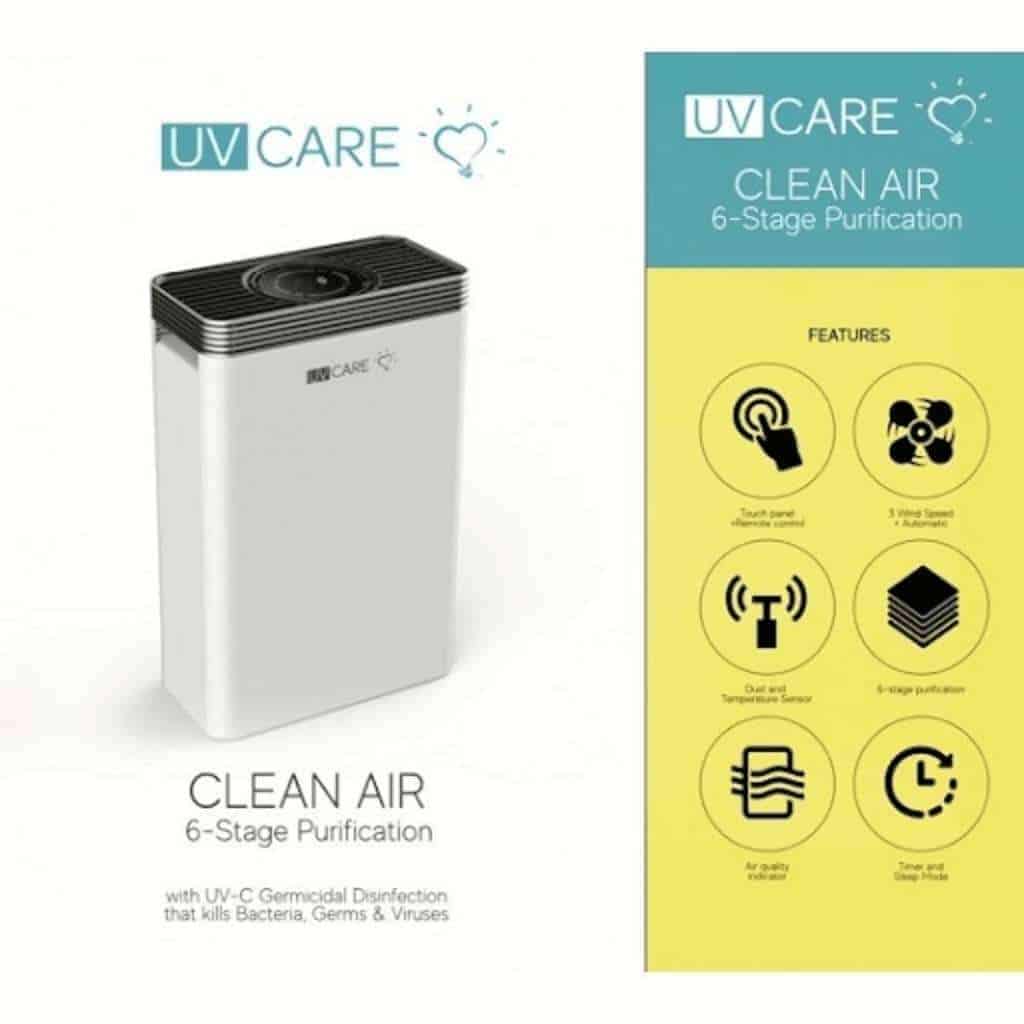
أشياء أخرى يجب النظر إليها عند اختيار جهاز تنقية الهواء المعقّم بالأشعة فوق البنفسجية على النحو التالي:
- مستوى الضوضاء
- استهلاك الطاقة
- الشركة المصنعة
- الضمان
مستوى الضوضاء
إحدى الميزات الأكثر شيوعاً التي يجب النظر إليها هي مستوى ضوضاء معقم الهواء. أجهزة التعقيم الهوائية هادئة بشكل عام، ولكن مستوى الصوت يرتفع كلما زاد مستوى مروحتها.
تحتوي معظم أجهزة التعقيم بالهواء على 2 إلى 5 أوضاع للمروحة يمكنك ضبطها يدوياً أو تلقائياً. أوضاع المروحة هذه هي صامت، منخفض، متوسط، متوسط، مرتفع، تيربو . إذا قمت بتشغيله على الوضع التلقائي، سيتم ضبط المروحة تلقائيًا وفقًا لنظافة الهواء في غرفتك.
عادة ما تكون أجهزة التعقيم بالهواء في نطاق 20 إلى 60 ديسيبل قريب قليلاً من همهمة ثلاجتك. إذا كان ذلك يزعجك، يمكنك دائماً تبديلها إلى "الوضع الصامت" أو "الوضع الليلي" قبل النوم ليلاً. أو يمكنك اختيار جهاز تنقية الهواء بالأيونات السالبة لأنها لا تستخدم فلاتر ميكانيكية، مما يعني عدم وجود مروحة تعمل، كما أنها صامتة أكثر.
أحد الأشياء التي يمكن أن تساعد جهاز تعقيم الهواء على العمل بشكل أقل في وضع التوربو هو أن يكون حجمه مناسبًا للغرفة. إذا قمت بشراء جهاز تنظيف هواء صغير لغرفتك الكبيرة، فمن الطبيعي أن يعمل دائمًا في وضع التوربو، مما ينتج عنه المزيد من الضوضاء .
استهلاك الطاقة
تم تصميم أجهزة تعقيم الهواء لتعمل على مدار الساعة طوال أيام الأسبوع. ولهذا السبب، فهي مصممة بحيث تستهلك طاقة أقل لتنعكس على فواتير الكهرباء. معظم أجهزة تعقيم الهواء بالأشعة فوق البنفسجية المنزلية تتراوح من 40 إلى 200 واط من الطاقة. وبفضل تصنيف Energy Star، يمكنك ضمان توفير المزيد من الطاقة شهرياً.
لذلك سترغب في اختيار جهاز يمكن تشغيله طوال اليوم مثل ثلاجتك، ولكن بأقل تغيير على التكلفة الشهرية للكهرباء. يمكنك أيضًا توفير المزيد من الطاقة إذا اخترت تشغيلها بسرعات أقل عندما لا تكون في المنزل . بالنسبة للمنشآت، يمكنك اختيار جهاز تعقيم الهواء التجاري الذكي مع الوضع التلقائي لتنظيم إعدادات سرعة المروحة تلقائيًا وفقًا لجودة الهواء.
الضمان
انظر إلى الضمان قبل إجراء عملية الشراء. وذلك لضمان عدم الوقوع في مشاكل في المستقبل، مثل شراء قطع الغيار، وما إلى ذلك.
أشياء يجب معرفتها قبل شراء جهاز تعقيم الهواء

قبل شراء جهاز تعقيم وتنقية الهواء عليك أن تأخذ بعين الاعتبار:
- حجم الغرفة
- تحسينات التهوية
- المتطلبات الخاصة التي يجب مراعاتها
- الميزانية، أو كم عدد الوحدات والمبلغ الذي ترغب في صرفه
لترتيب الأمور، يجب أن يكون لديك منظور واضح لما تحتاج إليه. أولاً، قم بقياس الغرفة التي ستضع فيها جهاز تعقيم الهواء بالأشعة فوق البنفسجية . التالي هو معرفة الغرض المحدد. هل هو للمنزل فقط، أم أنك تحتاجه في منطقة تجارية، مثل مكتب أو عيادة أو منطقة تدخين أو مستشفى؟
-
اختر جهاز تعقيم الهواء المناسب لأحجام الغرف المختلفة
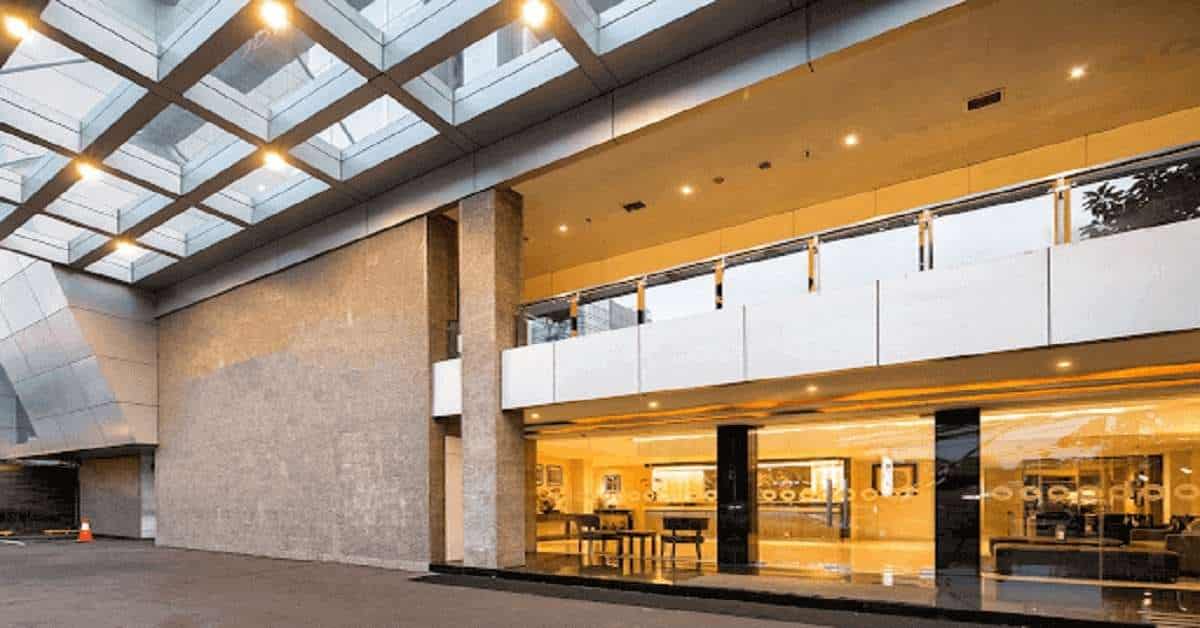
اختر جهاز تعقيم الهواء المناسب لأحجام الغرف المختلفة
لاختيار آلة تعقيم الهواء المثلى لغرفتك أو تطبيقك، يجب عليك أولاً معرفة السعة المطلوبة من الهواء المعقم، ومعدل تعقيم الهواء المركز، وحجم غرفتك.
مساحة الغرفة
حجم الغرفة هو مساحة الغرفة التي ستضع فيها جهاز تعقيم الهواء. تحتاج إلى معرفة حجم الغرفة. تحقق من مخطط الغرفة أو يمكنك قياسها يدوياً.
تصنيف CADR
التالي هو معرفة معدل توصيل الهواء النظيف (CADR). معدل توصيل الهواء النظيف (CADR) هو مدى سرعة جهاز تعقيم الهواء في تنظيف حجم الهواء في الغرفة. وغالباً ما يتم التعبير عنه بوحدة CFM أو الأقدام المكعبة في الدقيقة. ستحتاج إلى معرفة تصنيف CADR قبل أن تتمكن من اختيار نظام تنظيف الهواء المناسب.
إن أبسط طريقة للحصول على CADR هي من خلال AHAM ( رابطة مصنعي الأجهزة المنزلية ) توصية.
عند الحصول على قياس غرفتك بالأقدام المربعة, اقسمها على القيمة الثابتة 1.55 . ينطبق هذا على الغرف التي يبلغ ارتفاع سقفها 8 أقدام.
فعلى سبيل المثال لديك غرفة مساحتها 200 قدم مربع، عليك قسمة ذلك على 1.55. وبذلك، ستحصل على 129.03 CFM 129.03 . التالي هو النظر في ACH الذي تحتاجه للحصول على جهاز تعقيم الهواء الذي تحتاجه بالضبط.
تصنيف ACH ACH
ACH هو عدد مرات تغير الهواء في الساعة، وهو عدد مرات تنقية الهواء في الغرفة في ساعة واحدة. يجب أن يعتمد هذا الرقم على نوع الغرفة أو استخدام الغرفة.
فيما يلي قيم ACH الموصى بها لكل نوع من أنواع الغرف.
كما لاحظتَ، كلما كانت الأنشطة أكثر أهمية، يوصى بارتفاع معدل الغسيل الكلوي ACH.
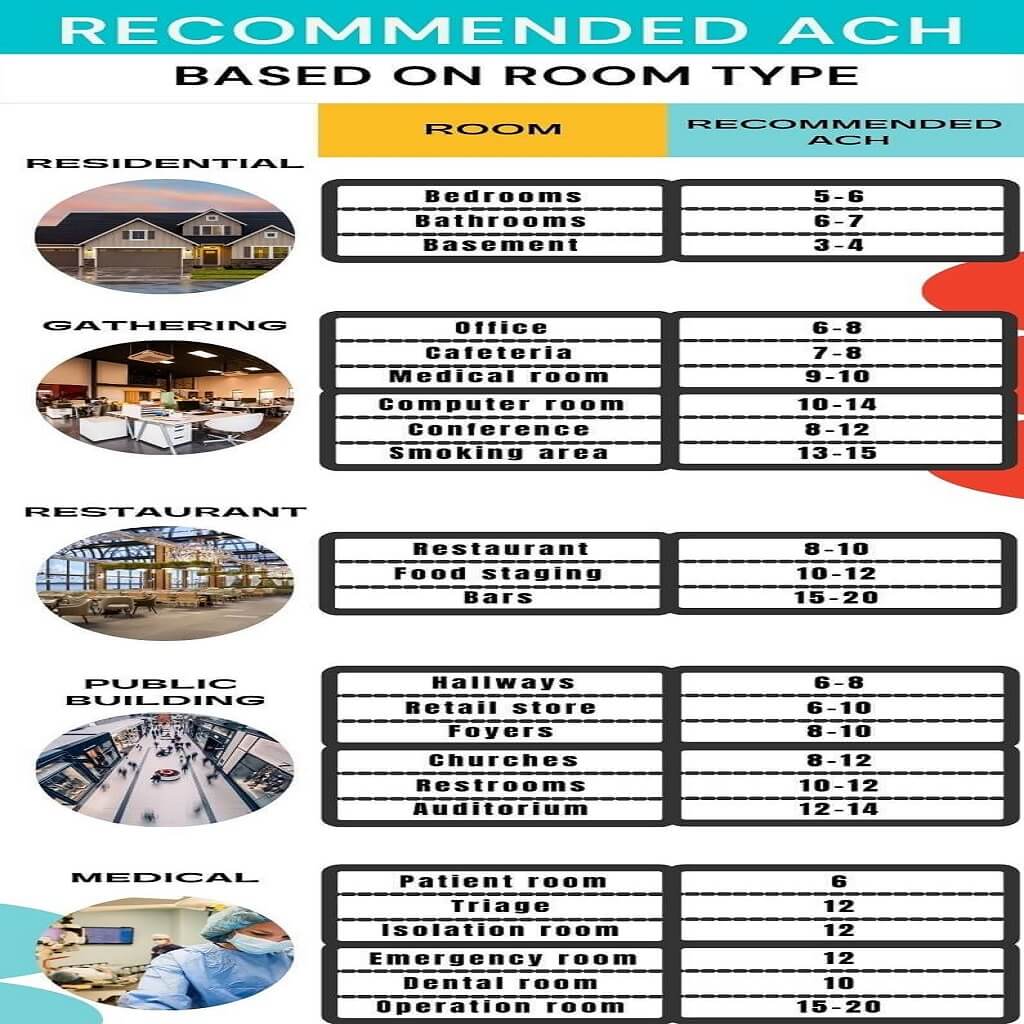
عادةً ما يكون للمساحات السكنية ACH 4 أو أعلى. وهذا يعني أن جهاز تعقيم الهواء يجب أن ينقي الهواء في الغرفة 4 مرات في الساعة.
نصائح حول كيفية اختيار معقم الهواء المناسب
والآن دعونا نجمع بين هذين المبدأين للحصول على معقم الهواء المناسب. وللقيام بذلك، ما عليك سوى ضرب CADR في ACH الذي تحتاجه حسب نوع الغرفة.
على سبيل المثال، إذا كنت تريد ماكينة تعقيم الهواء لغرفة مريض في مكان طبي. من الجدول أعلاه، يوصى باستخدام ACH 6 لهذا التطبيق. ثم نتبع هذه المعادلة:
معقم هواء مناسب CADR = (حجم الغرفة بالأقدام المربعة / 1.55) × السعة المطلوبة من السعة الحرارية المضافة
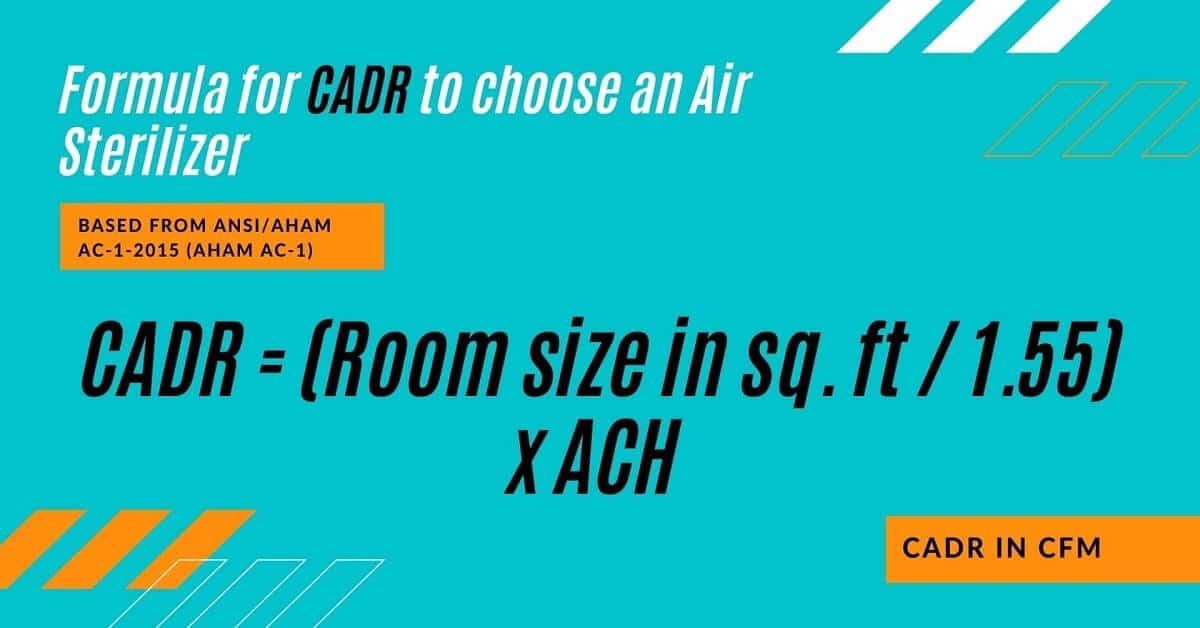
نضرب 129.03 CFM × 6 = 129.03 CFM × 6 = 774.19 CFM 774.19 أو 780 CFM
هذا يعني فقط أنك إذا كنت ترغب في شراء جهاز تعقيم الهواء بالأشعة فوق البنفسجية التي تناسب غرفة المرضى التي تبلغ مساحتها 200 قدم مربع، تحتاج إلى اختيار جهاز يحتوي على معدل تعقيم هواء CADR يبلغ 780 CFM. وهذا يعني أيضًا أنه عند معدل CADR يبلغ 780 CFM، يمكن لجهاز تعقيم الهواء تنظيف هواء الغرفة 6 مرات في الساعة أو كل 10 دقائق.
-
تعرف لماذا نحتاج إلى جهاز لتنقية الهواء للمنزل والمستشفيات والمطاعم

المستشفى
جهاز تنقية الهواء للمنزل
يتنفس الأشخاص الذين يقضون الوقت في المنزل طوال اليوم أكثر من 20,000 نفس يوميًا مما يجعل الهواء الداخلي فاسدًا وملوثًا أكثر. إذا كنت تسكن حالياً في المنزل بشكل أكبر بسبب ظروف العمل من المنزل اليوم، فمن الأفضل أن تبقى في المنزل مع هواء نقي ونظيف لتتنفسه.
وبالتالي فإن جهاز تعقيم الهواء المحمول طريقة رائعة للحفاظ على تنقية الهواء الداخلي، خاصةً إذا كان منزلك مأهولاً بالسكان بشكل متكرر.
جهاز تنقية الهواء لغرف المستشفيات
تحتاج غرف المستشفيات ومرافق العزل إلى شيء أقوى من أجهزة تنقية الهواء. وفي هذه الحالة، يكون جهاز تعقيم الهواء بالأشعة فوق البنفسجية أكثر عملية للاستخدام لتنظيف الهواء النظيف بالكامل وتدويره. أفضل الأماكن لوضع هذه الأجهزة هي المناطق التي يتفاعل فيها الناس أكثر من غيرها .
- يمكن أن تكون المناطق عالية الخطورة:
- بالقرب من المرضى المصابين بالعدوى,
- غرف المرضى
- المواقع المولدة للهباء الجوي أو غرف توليد الهباء الجوي
- غرف المستشفى
- غرف الجراحة
أجهزة تنقية الهواء للمطاعم
إذا كنت تمتلك مطعماً، فأنت بالتأكيد بحاجة إلى اتخاذ احتياطات إضافية لضمان سلامة زبائنك من فيروس كورونا. هذا هو المكان الذي يخلع فيه الناس أقنعة الوجه عند تناول الطعام، وبالتالي، بصرف النظر عن المسافة 6 أقدام بين الطاولات، يمكنك وضع معقم هواء في الغرفة.
إن القيام بذلك لا يقلل بشكل كبير من ملوثات الهواء المنتشرة في الغرفة فحسب، بل يمنع أيضاً انتشار الفيروسات من شخص إلى آخر.
جهاز تنقية الهواء للصالات الرياضية
نظرًا لأن هذه المرافق هي المكان الذي تقام فيه الأنشطة الترفيهية، فإنها غالبًا ما تكون مليئة بالهواء الفاسد والجسيمات المحمولة في الهواء والمواد الكيميائية مثل ثاني أكسيد الكربون والفورمالديهايد. وبالتالي، تحتاج مرافق التمارين الرياضية والمنتجعات الصحية والصالات الرياضية إلى آلات تعقيم الهواء التجارية للحد من هذه الملوثات خاصةً إذا لم تكن جيدة التهوية.
ومن المثير للصدمة أن وكالة حماية البيئة الأمريكية تخبرنا أن تركيز تلوث الهواء داخل المنازل أعلى منه في الهواء الطلق. ويدعم ذلك مركز السيطرة على الأمراض والوقاية منها (CDC) الذي يخبرنا أن فيروسات كوفيد-19 تنتشر بين الناس في الأماكن المغلقة أكثر بكثير من الأماكن الخارجية. ومن هنا تأتي الحاجة إلى آلة تنظيف الهواء للمنازل أو المنشآت الداخلية.
كما ترى، فإن آلة تعقيم الهواء يقوم بأكثر من مجرد تنظيف الهواء الداخلي. فكر في الأمر كنظام مطور لتنقية الهواء. فهو جهاز تعقيم الهواء بالأشعة فوق البنفسجية لا تحبس الأوساخ والبكتيريا والفيروسات فقط. كما أنها تعقم الهواء لقتل هذه الكائنات الدقيقة. مع هذه الميزات المعززة لـ آلة تنظف الهواء بدقة فهي ليست رخيصة الثمن.
وبالتالي، إذا كنت ترغب في زيادة ما تدفعه إلى أقصى حد، احصل على الجهاز المناسب. تحقق من مواصفاتها لتغطية متطلبات الهواء في غرفتك.
حاشية جانبية: بصفتنا موردًا متمرسًا لأجهزة تعقيم الهواء، فإن شركة HisoAir تتحلى بالخبرة في مجال تعقيم الهواء، وتختلف عن غيرها عندما يتعلق الأمر بالقدرة على تحمل التكاليف. نحن نصنِّع آلات تعقيم الهواء من الدرجة الصناعية للمستشفيات والمنازل والمطاعم. نتميز بتكنولوجيا تنظيف الهواء التي تم اختبار جودتها، ونقدم لعملائنا خدمات رائعة لتصنيع المعدات الأصلية/التصنيع حسب الطلب. اتصل بنا للحصول على عرض أسعار سريع!
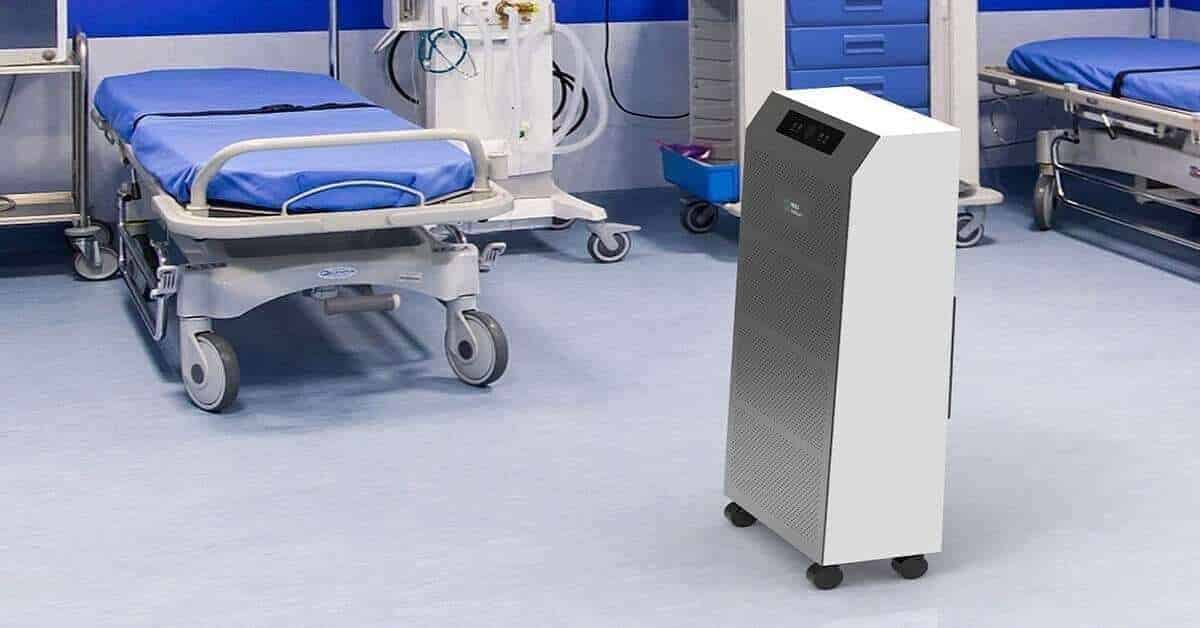
-
اعرف حاجتك عند شراء آلة تعقيم الهواء
إذا كنت تعاني من الحساسية
يمكن استخدام أجهزة تعقيم الهواء المنقّية للهواء كـ "أجهزة لتنقية الهواء" والتي يمكن أن تساعدك إذا كنت تعاني من الحساسية داخل منزلك، كما يمكن أن تكون أجهزة تعقيم الهواء حلاً لمرافق الرعاية الصحية التي تأوي المرضى من أجل تخلص من الحساسية.
- تعمل أجهزة تعقيم الهواء HEPA على خفض تركيز الجسيمات وعث الغبار في الهواء الداخلي.
- تساعد أجهزة تعقيم الهواء بفلتر PECO على تقليل أعراض الحساسية
- تجلب آلات تعقيم الهواء تأثيرات علاجية للأشخاص الذين يعانون من الربو من خلال عث الغبار.
إذا كنت تعاني من الربو
على الرغم من عدم وجود علاج فعلي للربو، إلا أن هناك أشياء صغيرة يمكنك القيام بها لمنع تحفيزه. إن التنظيف المستمر للأسطح المتربة والتخلص من روث الحيوانات الأليفة يُحدث فرقاً لمرضى الربو.
وفقًا لدراسة، فإن معقمات الهواء و أجهزة تنقية الهواء تساعد الأطفال الذين يعانون من الربو . إن أجهزة تعقيم الهواء أكثر من قادرة على إزالة الجسيمات الصغيرة التي تساعد في تقليل أعراض الربو. لا يقوم فلتر HEPA بحبس الغبار فحسب، بل يقوم أيضاً بتعقيم الهواء الداخلي.
للحصول على أفضل النتائج, أجهزة تنقية الهواء المزودة بفلاتر قابلة للغسل يجب غسل الفلاتر باستمرار واستبدالها كل شهرين إلى 3 أشهر. وذلك لمساعدة مرضى الربو على استنشاق هواء أنقى.
إذا كان بسبب مشاكل في الغبار
ماكينات تصفية غبار الهواء مزودة بخاصية True HEPA ذات كفاءة عالية في إزالة أطنان من الغبار خاصة إذا كنت تتنفس هواء المدن. تتميز فلاتر HEPA بفعالية 99.97% في إزالة أصغر الجسيمات حتى 0.3 ميكرون. وعادة ما يكون الغبار في نطاق 2.5 إلى 10 ميكرون، مما يعني أنه يمكن احتجازه بسهولة في الفلتر.
في حالة وجود مشاكل العفن أو العفن الفطري
إذا كنت تعاني من مشاكل العفن الشديد، خاصةً إذا كنت تعيش أو تسكن في مكان شديد الرطوبة. تشير منظمة الصحة العالمية (WHO) إلى أن من خلال عدد من الدراسات أن العفن يمكن أن يحفز أيضًا أعراض الجهاز التنفسي والربو.
أفضل طريقة للتعامل مع مشاكل العفن هي تنظيفه يدوياً. ومع ذلك، ولمنع أي نمو إضافي، يمكنك استخدام جهاز تنقية الهواء للحد من العفن. يمكن أن تقلل أجهزة تنقية الهواء أيضاً من رائحة العفن التي عادةً ما ترتبط بالعفن.
إذا كنت تعيش في منطقة رطبة, معقمات الهواء المحمولة يمكن استخدامها لالتقاط الغبار وتنظيف الهواء من الجراثيم التي تسبب العفن.
إذا كان التخلص من روائح الحيوانات الأليفة
على الرغم من أن شعر الحيوانات الأليفة ليس من الأمور الرئيسية لمعدات تنظيف الهواء، إلا أنه يمكن أن يساعد في التخلص من شعر الحيوانات الأليفة إذا كان لا يزال يطفو في الهواء. يُعدّ تنظيف شعر الحيوانات الأليفة الملتصق بالأريكة أو السرير بالمكنسة الكهربائية حلاً أكثر قابلية للتطبيق.
ومع ذلك، فإن امتلاكك لجهاز تعقيم الهواء لا يحل فقط مشكلة شعر الحيوانات الأليفة في المنزل أو إذا كنت تمتلك متجرًا/صالونًا للحيوانات الأليفة. يمكن أن تكون رائحة الحيوانات الأليفة كريهة و يمكن أن تساعد منظفات الهواء في التخلص منه من خلال فلتر الكربون المنشط.
أيضًا، إذا خرجت الحيوانات الأليفة إلى الخارج، فقد تجلب معها الملوثات إلى منزلك. لذا، فإن أفضل أجهزة تنقية الهواء للحيوانات الأليفة هي تلك التي يمكنها إزالة روائح الحيوانات الأليفة والروائح الكريهة والمواد المسببة للحساسية التي تجلبها إلى المنزل من خلال مخالبها.
الازدهار في بيئة مليئة بالدخان
في دراسة عام 2016 ، تم العثور على آلات تطهير الهواء رائعة في إزالة الدخان والمواد المسببة للحساسية. يساعد فلتر الكربون المنشط تخلص من الدخان والروائح الكريهة الأخرى الناتجة عن التلوث في الخارج. لهذا السبب غالباً ما يُطلق على منظفات الهواء أيضاً اسم "آلات التقاط الدخان أو "آلات إزالة الدخان".
منع انتشار فيروس كورونا المستجد (كوفيد-19)
هنا حيث جهاز تعقيم الهواء بالأشعة فوق البنفسجية فوق البنفسجية يعمل بشكل أفضل إذا كنت تريد طرقًا تكميلية في استراتيجيات الوقاية من فيروس كورونا. وبصرف النظر عن التباعد الجسدي وارتداء الكمامات ونظافة اليدين والتطعيم، فقد ثبت أن تحسين جودة الهواء الداخلي والتهوية يقلل من انتشار المرض.
كما ذكرنا سابقًا, أجهزة تنقية الهواء المزودة بجهاز تعقيم بالأشعة فوق البنفسجية لا تحبس الفيروسات فحسب، بل تحبس أيضًا تقتلهم بالأشعة فوق البنفسجية. . يعمل ضوء الأشعة فوق البنفسجية على تعطيل الفيروس عن طريق فتح طبقة البروتين الخاصة به، مما يجعله عرضة للبيئة وبالتالي قتله.
-
تحديد الاختلافات بين أجهزة التعقيم بالهواء
آلة تطهير الهواء بالبلازما
يعمل هذا مع عملية تأين الهواء لإبطال مفعول مسببات الأمراض والفيروسات من الهواء الداخلي. حيث يعمل التفاعل بين الأيونات السالبة والموجبة الشحنة على تدمير غشاء الخلية الفيروسي، مما يؤدي إلى تعطيله.
هناك أدلة متزايدة على قدرة آلات تعقيم الهواء بالبلازما على تنظيف الهواء والحد من انتشار عدوى كوفيد-19 في المستشفيات.
يمكن أن تكون آلات تطهير الهواء بالبلازما إما آلة قائمة بذاتها أو مثبتة في نظام التدفئة والتهوية وتكييف الهواء لديك.
جهاز تعقيم الهواء بالأشعة فوق البنفسجية
تستخدم أجهزة تعقيم الهواء بالأشعة فوق البنفسجية الأشعة فوق البنفسجية (UV-C) لتعطيل وقتل مسببات الأمراض مثل العفن. وعادةً ما يتم شراؤها كآلات قائمة بذاتها ولكن يمكن تركيبها أيضاً في وحدات التدفئة والتهوية وتكييف الهواء التجارية.
كما أن وحدات تطهير الهواء بالأشعة فوق البنفسجية مزودة بفلتر True HEPA لالتقاط 99.97% من الملوثات حتى حجم 0.3 ميكرون بفعالية.
أسئلة وأجوبة حول آلة تعقيم الهواء
هل آلة تعقيم الهواء تستحق العناء؟
إذا كنت أحد أعلى المؤسسات عالية المخاطر, نعم، نوصي بشدة باستخدام نظام تنظيف الهواء أو جهاز تعقيم الهواء. فهو لا يحمي عملاءك/زبائنك من الملوثات المحمولة جواً من التعرض الطويل الأمد فحسب، بل يضيف أيضاً حماية إضافية لموظفيك من الإصابة بمرض كوفيد-19.
مقالة ذات صلة: هل أحتاج إلى جهاز لتنقية الهواء؟ هل أجهزة تنقية الهواء مضيعة للمال؟
أين يتم وضع معقم الهواء؟
أفضل الأماكن لوضع جهاز تنقية الهواء هي:
-
- بعيداً عن الزوايا والأثاث
- بالقرب من الباب
- بعيداً عن أجهزة التكييف
- بعيداً عن المناطق الرطبة (مثل الحمام)
- من أين يأتي الغبار في الغالب
- بالقرب من الروائح الكريهة أو مصادر الأدخنة والمركبات العضوية المتطايرة والمواد الكيميائية وغيرها.
- عند تناولك للتدفئة والتبريد والتكييف
لمزيد من التفاصيل، يُرجى قراءة مقالنا: ما هي أفضل الأماكن لوضع جهاز تنقية الهواء؟
أفضل طريقة لاستخدام معقم الهواء
إن أفضل طريقة لاستخدام جهاز تعقيم الهواء هي للغرف التي تعاني من الحساسية أو الربو أو الغبار. في الوقت نفسه، إذا كنت ترغب في تقليل التلوث الفيروسي لـ Covid-19، فإن استخدام جهاز تعقيم الهواء HEPA عالي الأداء يمكن أن يساعدك بشكل عام.
أماكن شراء آلات تعقيم الهواء
إذا كنت تبحث عن جهاز تنقية هواء من الدرجة الطبية للتخفيف من حدة الفيروسات، فمن المهم أن تأخذ بعين الاعتبار سمعة الشركة المصنعة. لقد كتبنا لك أفضل العلامات التجارية لأجهزة تنقية الهواء وهي
- IQAir
- هواء الأرنب
- جهاز تنقية الهواء بلو إير
- جيرمجارديان
- أجهزة تنقية الهواء ليفويت
- إلخ
مقالة ذات صلة: أفضل 12 علامة تجارية عالمية المستوى في مجال تنقية الهواء (2021) HEPA
هذه العلامات التجارية معروفة جيداً وتعمل في هذا المجال منذ سنوات عديدة. إنها أفضل الخيارات إذا كنت تبحث عن أجهزة تنقية الهواء المنزلية.
الشركات المصنعة لآلة تعقيم الهواء
إذا كنت ترغب في إلقاء نظرة على خيارات الشراء الأخرى، مثل المصانع التي يمكنها القيام بما يلي الشركة المصنعة للمعدات الأصلية أو خدمات وضع العلامات الخاصة، تأكد من أن الشركة المصنعة قد قدمت تقارير اختبار HEPA وشهادات التحقق.
إذا كنت تختار الشراء من شركة الشركة المصنعة لأجهزة تنقية الهواء في الصين مثل Hisoair ، ستحتاج أيضًا إلى الاتصال بالشركة المصنعة لترسل لك تقارير الاختبار وامتثال المنتج وفيديو لمصنعها وآلة تعقيم الهواء العاملة.
الخاتمة
هناك الكثير من الاعتبارات الرئيسية التي تحتاج إلى التفكير فيها قبل شراء آلة تعقيم الهواء. لا تأتي هذه الآلات رخيصة الثمن في المقام الأول، لذا فإن وضع أموالك على وحدة غير مناسبة لتطبيقك هو مضيعة للمال.
تشمل الاعتبارات الميزات التي يجب أن تنظر إليها، والأنواع المختلفة المتاحة، والأحجام التي يجب أن تبحث عنها. إذا كنت تتساءل من أين تشتري جهاز تعقيم هوائي للمستشفى أو للاستخدام التجاري أو المنزلي، فلا تبحث عن المزيد. إن HisoAir مورد معتمد لوحدات تعقيم الهواء عالية الأداء المتوفرة بأحجام وخيارات مختلفة. اتصل بنا للحصول على عرض أسعار سريع!



